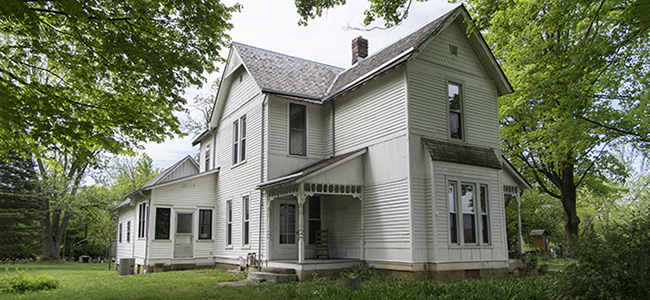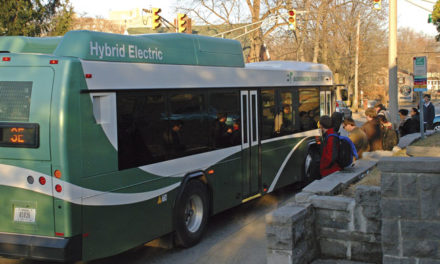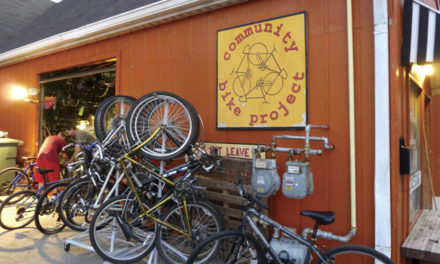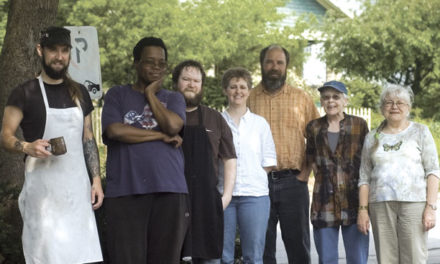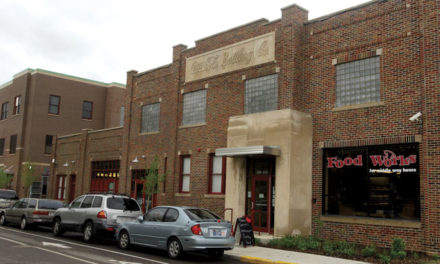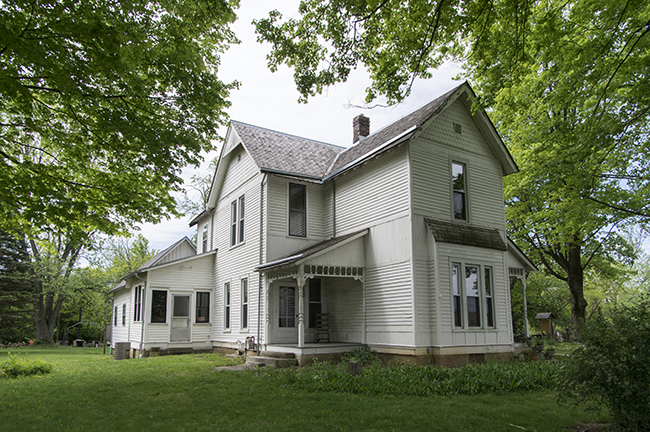
Daisy Garton’s Queen Anne–style home, constructed in 1892, sits on 11 acres on the east side of Bloomington.
The home serves as both an office for Bloomington Restorations, Inc. and a museum run by volunteers.
BY BARB BERGGOETZ
Hinkle-Garton Farmstead, located as it is among shopping centers, office buildings, and apartment houses, is a hidden gem on Bloomington’s east side. The property’s two homes, four outbuildings, gardens, and extensive grounds serve as a living museum and offer a unique glimpse into Monroe County’s agricultural past. The main home, a farmhouse in the Queen Anne style, was built in 1892. The first-floor museum depicts the life of Daisy (Hinkle) Garton and her influence as a local music teacher for 39 years.
Garton died in 2003 at the age of 94 and left the 11-acre property in trust for a nonprofit group willing to maintain it as a museum and educate people about Monroe County history, gardening, and agriculture. In 2004, Bloomington Restorations, Inc. (BRI) stepped in to fulfill that role. “She loved this property. It meant so much to her,” says Danielle Bachant-Bell, a volunteer with BRI. “She knew if she didn’t protect the property, it would be developed. She wanted to preserve it.”
The first-floor vestibule, parlor, dining room, music room, and kitchen include stylized decorations and original furnishings from the late 1800s. Mementos from three generations of Hinkle family members, including a piano and blue china set, fill the rooms. The home still maintains virtually all of its original wood floors and woodwork, including built-in cabinets, doors and doorframes, and transoms. The farmstead grounds provide visitors with experiences typical of a 19th-century farm, such as summer workshops on growing, drying, and cooking with herbs and instruction on harvesting and processing maple syrup. Volunteers are also encouraged to help out with a variety of ongoing projects in the gardens and on the grounds. To volunteer, contact Michael Bell at midasglass@me.com.
“It’s not static,” says Bachant-Bell. “We want the farmstead to be educational, as well as historic.” The farmstead, located at 2920 E. 10th St., often hosts exhibits and classes and usually has an open museum day on the last Saturday of the month. The house and grounds are also available to rent for private events. For more information, see the About Us section at bloomingtonrestorations.org. Information is also available at Hinkle-Garton Farmstead on Facebook.


